LECTURE22 - Video presentations by Experts on Energy Systems and Indoor Environment
Rozsah: 7Počet kreditů: 0
Forma ukončení:
The aim of the project is to obtain information and an international perspective on the energy performance and indoor environmental quality of buildings currently under construction. Another objective is to promote the practice of foreign languages in professional fields.
The lectures are available in an offline version.
Thank you to all the speakers.
In case of unavailability of lecture, please use email: michal.kabrhel (at) fsv.cvut.cz
Faculty of Civil Engineering Czech Technical University in Prague
Czech language: Cílem projektu je získání informací a mezinárodního pohledu na problematiku energetické náročnosti a kvality vnitřního prostředí v budovách řešených v současné době. Dalším cílem je podpořit praktikování cizích jazyků v odborných oblastech. Přednášky jsou dostupné v offline verzi.
Řešitel projektu: Michal Kabrhel
Děkuji všem přednášejícím.
V případě nedostupnosti přednášky napište na: michal.kabrhel (at) fsv.cvut.cz
Thank you to all the speakers.
In case of unavailability of lecture, please use email: michal.kabrhel (at) fsv.cvut.cz
Faculty of Civil Engineering Czech Technical University in Prague
Czech language: Cílem projektu je získání informací a mezinárodního pohledu na problematiku energetické náročnosti a kvality vnitřního prostředí v budovách řešených v současné době. Dalším cílem je podpořit praktikování cizích jazyků v odborných oblastech. Přednášky jsou dostupné v offline verzi.
Řešitel projektu: Michal Kabrhel
Děkuji všem přednášejícím.
V případě nedostupnosti přednášky napište na: michal.kabrhel (at) fsv.cvut.cz
| Téma | Přednášející | |
| 1 | prof. Werner Stutterecker, PhD. 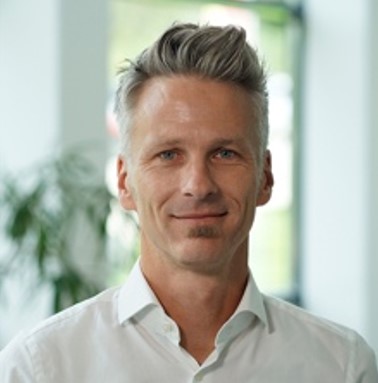
Fachhochschule Burgenland GmbH, Austria, Campus Pinkafeld About the Speaker: Werner Stutterecker is working at the Fachhochschule Burgenland (University of Applied Sciences), Austria, at the campus in Pinkafeld. Before that, he was an employee at the research company Forschung Burgenland (a company of the Fachhochschule Burgenland Group) and was working as a researcher in field of heat pumps. As an example, he initialized and developed research projects in the field of thermoelectric and thermoacoustic heat pumps and wrote this doctoral thesis at the Slovak University of Technology in Bratislava about thermoelectric heat pumps in buildings. When he transferred to the Fachhochschule Burgenland in 2016, he became lecturer and the head of the bachelor study program Building and Energy Technology. Lecture: HEAT PUMPS AND BUILDINGS Abstract: The climate is changing and so should we! This is the motivation to increase the fraction of renewable energies. If we consider the building stock e.g. in Austria, the vast majority of buildings are “old” buildings. Therefore, it is necessary to thermally renovate these buildings. After a deep thermal renovation, the heating system can be exchanged. One possibility would be to install a heat pump. But can a heat pump only be combined with a low temperature floor heating system? Or is it also possible for thermally renovated buildings to combine a heat pump with a heat radiator? Answers will be given in the presentation… |
|
| 2 | Prof. William P. Bahnfleth 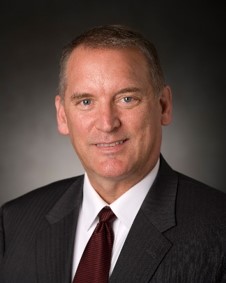
The Pennsylvania State University, USA About the Speaker: Prof. William Bahnfleth holds a doctorate in mechanical engineering and is a Registered Professional Engineer. He has extensive experience in professional practice designing district energy systems with a specialization in thermal energy storage. He has participated in more than 25 thermal storage projects worldwide. He is the author of over 200 publications. Dr. Bahnfleth is a past President of ASHRAE and past Chair of its Technical Committee for Thermal Energy Storage. He is a Distinguished Alumnus of the University of Illinois Dept. of Mechanical Science and Engineering and recipient of ASHRAE’s Bill and Louise Holladay Distinguished Fellow Award and F. Paul Anderson Award, ASHRAE’s highest honor. Lecture: THERMAL ENERGY STORAGE & SUSTAINABILITY Abstract: Active thermal energy storage is an established technology for improving the performance of heating and cooling systems that has achieved renewed relevance with the growth of renewable electric power supplies. This presentation will review fundamentals of thermal storage and discuss ways in which it contributes to the sustainability of integrated energy systems. |
|
| 3 | prof. Anatolijs Borodinecs 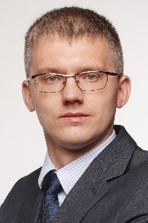
Riga Technical University, Latvia About the Speaker: Since 2013 Dr. sc. ing. Anatolijs Borodinecs holds professor status in the Institute of Heat, Gas and Water Technology of Riga Technical University. His main research areas are building energy efficiency and building physics. The major recently elaborated projects: “Deep nZEB modular retrofitting and energy efficient solutions for unclassified buildings”. He recently participated in INTERREG, FP7 projects as well in HORIZON2020. Under Fulbright scholarship Anatolijs had an opportunity to gain academic experience at Indoor Environment Center, Department of Architectural Engineering of the Pennsylvania State University. He is a certified HVAC designer as well as an energy auditor. As an energy auditor Anatolijs was in charge of several projects on solar energy systems design and implementation of dynamic energy simulation. 90 SCOPUS publications, SCOPUS h-index 12 Lecture: DESIGN AND MAINTENANCE OF MODERN ENERGY EFFICIENT BUILDINGS Part1 DESIGN AND MAINTENANCE OF MODERN ENERGY EFFICIENT BUILDINGS Part2 Abstract: The main challenge for engineers is to have all the pieces of the energy efficiency puzzle and to make them all fit together. The mains pieces of the puzzle are climate, building envelope, heating, ventilation and air-conditioning systems, human comfort requirements and indoor air quality. The presentation will address main parameters which have effect on building energy efficiency with a focus on Baltic climate. In order to ensure the energy efficiency of buildings, modern external building envelopes such as building heating, ventilation and air conditioning systems are becoming more and more complex. In addition, the latest COVID19 outbreak has highlighted the importance of proper ventilation systems; that in turn leads to, significant minimization of possible compromise between building energy efficiency level and quality of indoor environment. |
|
| 4 | prof. Tham Kwok Wai 
National University of Singapore Department of the Built Environment, College of Design and Engineering Visiting Professor, Czech Technical University About the Speaker: Professor Kwok Wai Tham is an Academy Fellow of the International Academy for Indoor Air Sciences (IAIAS) and the World Society of Sustainable Energy Technologies (WSSET). and former President and Trustee of the International Society of Indoor Air Quality and Climate (ISIAQ). He directs the NUS research program in Indoor Environment and Health and has published more than 300 articles in this field. He has contributed to the development of IAQ guidelines, internationally as a consultant to World Health Organization and in Singapore including the Singapore Standard SS 554. He is an editorial board member of major journals relating to indoor environment and energy, including Indoor Air and Energy and Buildings. He has given keynote speeches at Indoor Air and Healthy Buildings conferences. Lecture: UNDERSTANDING THE IMPACT AND VALUE OF INDOOR ENVIRONMENTAL QUALITY: exposure, pathways, mitigation and benefits Abstract: Indoors is the single most important environment that people experience and interact with. Among the various dimensions of indoor environmental exposure, the air path is a dominant one which continues to attract attention. Its impact on the perceptual, satisfaction, wellbeing and infection aspects have become better understood, and inspired evidence-based motivations for a greater adoption in codes, standards and guidelines. A brief description on how exposure to indoor air affects humans provides a preamble to the approaches adopted for the quantification of its impact. Metrics include perceptual constructs variously used in surveys and feedback; self-reported effects on experience of sick building symptoms and work performance; exposure indices, infection risk, biological measures of bodily reactions. Together they compose a more holistic understanding of how exposure to indoor air affects people. The implications of these on design and innovation opportunities are suggested, with a special consideration for the COVID-19 challenge. |
|
| 5 | Asoc. prof. Jakub Kolarik 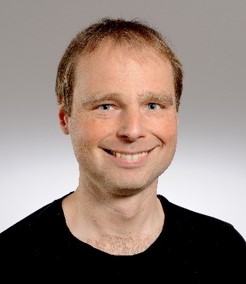
Technical University of Denmark, Denmark DTU Construct About the Speaker: Associate Professor Jakub Kolarik has a background in environmental engineering. His research interests include human thermal comfort, indoor air quality as well as systems and services that provide comfortable and healthy environment for building occupants. His current research includes innovative systems for residential ventilation, utilization of occupant feedback for optimization of building performance as well as research focused on understanding the role of building operators in the process of ensuring effective and healthy buildings. Jakub teaches courses focused on holistic energy renovations and utilization of building performance simulations in building design. Lecture: ENSURING COMFORTABLE AND HEALTHY INDOOR ENVIRONMENT IN (FUTURE) DWELLINGS Abstract: In my presentation, I will try to introduce the challenges related to design and operation of dwellings with respect to indoor environmental quality. It is a well known fact that people spend most of their time (some research says up to 90%) indoors. We are at home a substantial part of this time. Recent pandemic brought a paradigm shift in our working habits and while working from home, we increase the time spent in dwellings even more. The challenges we face when designing and operating dwellings are framed by the progressing climate change. I will introduce the research we conduct at the Technical University of Denmark to deal with these challenges. This research relates to mitigation of problematic conditions like overheating using innovative design strategies, developing new ventilation systems capable of better control of indoor environment as well as finding new ways how to monitor performance of existing system and commission them in a continuous manner to ensure that they perform as intended during their lifetime. |
|
| 6 | prof. Jan Hensen 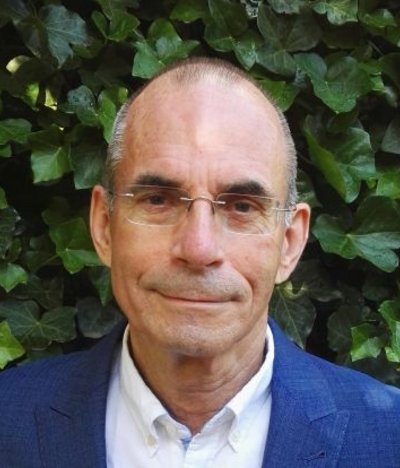
Eindhoven University of Technology, Netherland + Czech Technical University About the Speaker: Jan Hensen is emeritus full professor of building performance in the Building Physics & Services unit at Eindhoven University of Technology (TU/e), and also full professor of environmental engineering in the Department of Mechanical Engineering, Czech Technical University, Prague. His research and teaching focus on computational modeling and simulation for optimizing design and operation of high-performance buildings in terms of energy use and indoor environmental quality. He is editor-in-chief of the Journal for Building Performance Simulation. He is a Fellow of the International Building Performance Simulation Association (IBPSA), Fellow of the American Society of Heating, Refrigerating and Air-conditioning Engineers (ASHRAE), Fellow of the Federation of European Heating, Ventilation and Air-conditioning Associations (REHVA) and has received several other national and international scientific and practice awards. Lecture: BUILDING PERFORMANCE SIMULATION CHALLENGES AND OPPORTUNITIES Abstract: The presentation provides an overview of the background and current state of computational building energy performance simulation, and the opportunities there are in the context of energy efficient buildings and communities. This technology has the potential to deliver, directly or indirectly, substantial benefits to society and to the environment. However there exist also challenges such as quality assurance, the need to provide better early phase design support, multiscale approaches (from construction detail to district level), uncertainty and sensitivity analysis, robustness analysis (employing use and environmental change scenarios), optimization under uncertainty, and integration in the construction design and operation processes. |
|
| 6 | prof. Francesca Romana D'AMBROSIO 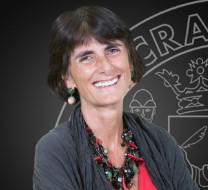
Department of Industrial Engineering in University of Salerno (Italy) About the Speaker: Full Professor of Building Physics at Department of Industrial Engineering in University of Salerno (Italy). Co-chair of Observatory for Gender Studies and Equal Opportunities at University of Salerno from 2014. Member of the Scientific Board of the CIBEC (Interdipartimental Center of Engineering for Cultural Heritage) of the University Federico II of Naples. Research Themes Thermal Comfort, Thermal Stress, Metabolic Energy, Thermophysical properties of clothing, Indoor Air Quality, Indoor Environmental Quality and search ThemesEnergy Saving in Buildings, Dampness in walls, Sustainability in the Energy field, History of Engineering. Lecture: HISTORIC BUILDINGS |